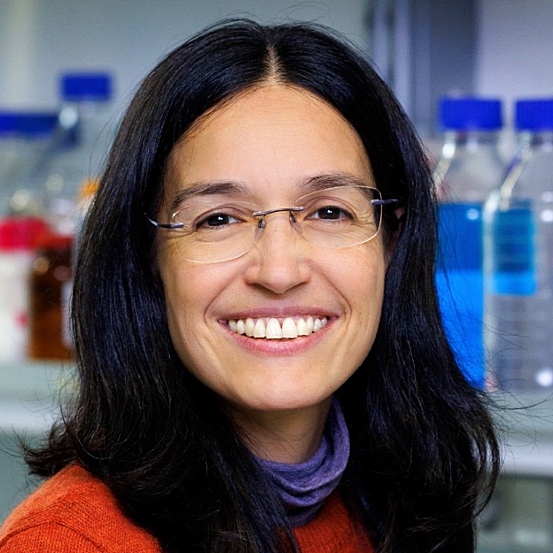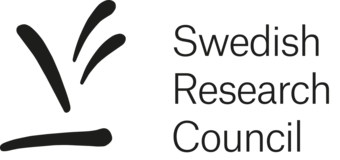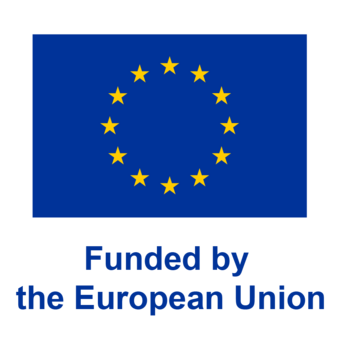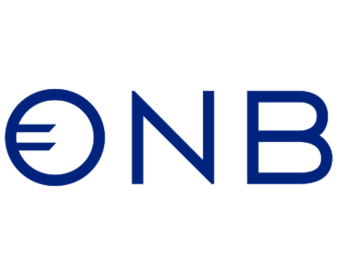Univ.-Prof. Dr. Noelia Urbán Avellaneda

Our research group is based at IMBA (https://www.oeaw.ac.at/imba/research/noelia-urban/). We are interested in the mechanisms allowing and regulating the generation and integration of neurons in the adult brain. Our research focuses on the delicate balance between quiescence and activation of adult neural stem cells, which determines both the rate of production of new neurons and the long-term maintenance of neurogenesis.
-
Developmental neuroscience
-
Stem cell biology
-
Cell fate decisions
Focal points of interest
Our projects intersect and synergize with the focus of the Cluster of Excellence on GABA cells on the following points:
-
Direct regulation of NSCs by inhibitory cells. Adult neural stem cells are highly heterogeneous, allowing them to respond to a vast diversity of cues while preserving the stem cell pool. Interneurons, through GABA signaling, can affect the quiescence and self-renewing potential of adult neural stem cells. We will investigate the mechanisms behind this direct modulation using both in vitro and bioinformatic tools, in collaboration with the Adameyko lab.
-
Specification of neural stem cell fate. One of the main interests of our lab is to decipher how the differentiative potential of neural stem cells is linked to their capacity to self-renew. For this, in addition to adult neural stem cells at different ages, we study the changing potential of neural stem cells during development. Together with the Grade, Harkany and Hippenmeyer labs, we will use lineage tracing during development to determine when neural stem cells commit to generate different interneurons progenitors and how this potential correlates with their ability to maintain neural stem cell properties and their fate specification until adulthood.
-
Identification of the building blocks of a regeneration-permissive environment. The generation and integration of new neurons in the adult brain does not happen throughout, but in very special locations or niches. We will use spatial transcriptomics and proteomics to compare the cellular environment of neurogenic and non-neurogenic areas, as well as regenerative and non-regenerative species (with the Tanaka lab), to identify candidate permissive and inhibitory cues to the processes of neurogenesis and neuronal integration.
-
Integration of new neurons into existing circuits. The process of adult neurogenesis provides a unique opportunity to study how new neurons functionally integrate into already existing circuits. Together with the Grade and Harkany groups, we will provide models to investigate interneuron plasticity (both integration of new neurons and formation of connections with incoming neurons) in the three main neurogenic zones in the mouse brain: the olfactory bulb, the dentate gyrus and the hypothalamus. The analysis of interneuron integration will be performed in collaboration with experts in neuronal physiology and electrophysiology within our consortium (Danzl, Jonas, Jösch and Zimmer).
-
Modulation of neurogenesis and brain function by external cues. Adult neurogenesis is particularly sensitive to external influences. Together with the Tessmar-Raible and Harkany groups, among others, we will determine the influence of stimuli such as diet and circadian rhythms on adult neurogenesis and interneuron function and plasticity.
Technical proficiency and instrumentation
Our lab has ample expertise in several techniques that we will be sharing with the consortium, such as genetic lineage tracing in mice, culture and maintenance of mouse and human neural stem cells, in vitro neuronal differentiation, single cell sequencing from brain tissue, CRISPR-based genetic modification and transgenic mouse generation. We also have access to state-of-the-art facilities including next-generation sequencing, proteomics, bio-optics and histology.
Aspirations for the next 5 years
We are very excited to collaborate with the consortium groups to broaden our research towards functional neuroscience and interneuron biology. We hope that our contribution to unraveling the developmental origin and specification of interneurons will help us better understand their specialized functions in different brain regions and identify common principles by which they orchestrate brain function. Our screening for pro-regenerative molecules could lead to future projects aiming to recreate a neurogenesis-permissive environment in non-regenerative regions. The collaborations we will set up within the cluster will also allow us to explore the complex relationship between neuronal activity and neural stem cell function in the adult brain.
References
- Gabarró-Solanas, Rut, Amarbayasgalan Davaatseren, Justus Kleifeld, Tatjana Kepčija, Thomas Köcher, Albert Giralt, Iván Crespo-Enríquez, and Noelia Urbán. “Adult Neural Stem Cells and Neurogenesis Are Resilient to Intermittent Fasting.” EMBO Reports 24, no. 12 (December 6, 2023): e57268. https://doi.org/10.15252/embr.202357268.
- Urbán, Noelia. “Could a Different View of Quiescence Help Us Understand How Neurogenesis Is Regulated?” Frontiers in Neuroscience 16 (2022). https://www.frontiersin.org/article/10.3389/fnins.2022.878875.
- Urbán, Noelia, and Tom H. Cheung. “Stem Cell Quiescence: The Challenging Path to Activation.” Development 148, no. 3 (February 1, 2021). https://doi.org/10.1242/dev.165084.
- Harris, Lachlan, Piero Rigo, Thomas Stiehl, Zachary B. Gaber, Sophie H. L. Austin, Maria del Mar Masdeu, Amelia Edwards, Noelia Urbán, Anna Marciniak-Czochra, and François Guillemot. “Coordinated Changes in Cellular Behavior Ensure the Lifelong Maintenance of the Hippocampal Stem Cell Population.” Cell Stem Cell, February 12, 2021. https://doi.org/10.1016/j.stem.2021.01.003.
- Austin, Sophie H. L., Rut Gabarró-Solanas, Piero Rigo, Oana Paun, Lachlan Harris, François Guillemot, and Noelia Urbán. “Wnt/β-Catenin Signalling Is Dispensable for Adult Neural Stem Cell Homeostasis and Activation.” Development 148, no. 20 (October 19, 2021): dev199629. https://doi.org/10.1242/dev.199629.
- Blomfield, Isabelle Maria, Brenda Rocamonde, Maria Del Mar Masdeu, Eskeatnaf Mulugeta, Stefania Vaga, Debbie Lc van den Berg, Emmanuelle Huillard, François Guillemot, and Noelia Urbán. “Id4 Promotes the Elimination of the Pro-Activation Factor Ascl1 to Maintain Quiescence of Adult Hippocampal Stem Cells.” eLife 8 (25 2019). https://doi.org/10.7554/eLife.48561.
- Urbán, Noelia, Isabelle Maria Blomfield, and François Guillemot. “Quiescence of Adult Mammalian Neural Stem Cells: A Highly Regulated Rest.” Neuron 104, no. 5 (December 4, 2019): 834–48. https://doi.org/10.1016/j.neuron.2019.09.026.
- Urbán, Noelia, Debbie L. C. van den Berg, Antoine Forget, Jimena Andersen, Jeroen A. A. Demmers, Charles Hunt, Olivier Ayrault, and François Guillemot. “Return to Quiescence of Mouse Neural Stem Cells by Degradation of a Proactivation Protein.” Science (New York, N.Y.) 353, no. 6296 (July 15, 2016): 292–95. https://doi.org/10.1126/science.aaf4802.
- Andersen, Jimena, Noelia Urbán, Angeliki Achimastou, Ayako Ito, Milesa Simic, Kristy Ullom, Ben Martynoga, et al. “A Transcriptional Mechanism Integrating Inputs from Extracellular Signals to Activate Hippocampal Stem Cells.” Neuron 83, no. 5 (September 3, 2014): 1085–97. https://doi.org/10.1016/j.neuron.2014.08.004.





